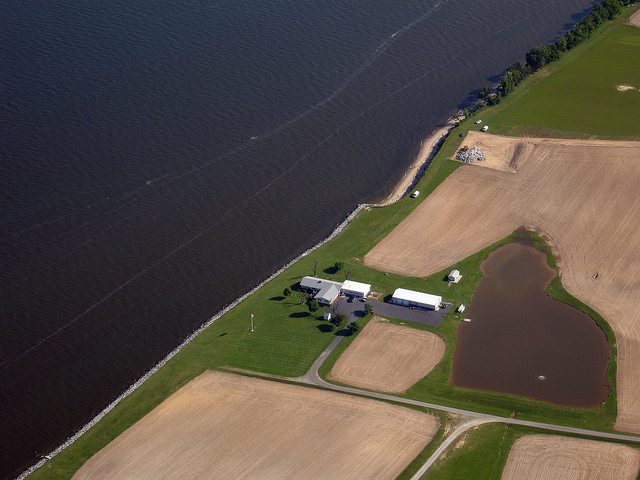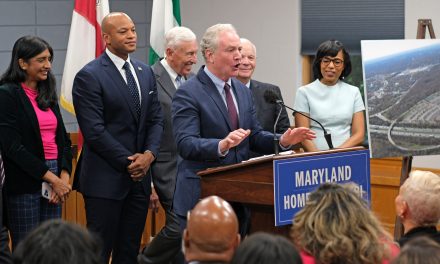By Karl Blankenship
Bay Journal
Amid concerns that Chesapeake cleanup efforts are lagging and that meeting future goals will be even more challenging, Bay leaders met Tuesday in Baltimore, vowing to stay the course and pump up the effort to help farmers establish water quality projects on their land.
The Chesapeake Executive Council signed a directive urging each state to increase technical assistance — the “boots on the ground” that provide assistance to farmers — to help them install runoff control practices on the more than 83,000 farms located in the Bay watershed.
The council, the Bay’s top policymaking body, includes the governors of Maryland, Virginia, Pennsylvania, Delaware, West Virginia and New York; the administrator of the U.S. Environmental Protection Agency; the mayor of the District of Columbia; and the chair of the Chesapeake Bay Commission, which represents state legislatures.
The EPA recently evaluated the region’s progress at the half-way point to its 2025 Bay clean-up goals and found it on track for meeting phosphorus and sediment goals but significantly lagging for nitrogen.
More than 70% of the nitrogen reductions to date have come from upgrades to wastewater treatment plants. Most of the major plants have been upgraded, so the bulk of the remaining reductions will need to come from agriculture, the largest source of the nutrients that fuel water-fouling algae blooms in the Chesapeake.
Pennsylvania is further behind than other jurisdictions in achieving its share of pollution reductions. There, roughly 80% of the remaining nitrogen reductions will need to come from agriculture, state officials have said.
More boots on the ground
To aid farmers, council members signed a directive committing states to provide “stable and sufficient technical assistance” to help them implement the conservation practices.
Recent reports from the Chesapeake Bay Funders Network and the Chesapeake Bay Commissionfound that there are too few people trained to help farmers design and install stream buffers, manure storage facilities and other runoff control practices. The directive calls on states to work with the private and nonprofit sectors to expand the network of trained professionals and streamline certification programs for providers.
Also, the governors signed a letter to Congress supporting increased federal Farm Bill spending for programs that fund key conservation programs used by Bay region farmers. The House and Senate have passed sharply different versions of the legislation and are attempting to work out their differences.
The council’s action came a day after the U.S. Department of Agriculture’s Natural Resource Conservation Service announced that it would step up its support for Bay cleanup activities. It released a Chesapeake Bay Watershed Action Plan that, among other things, pledged to help farmers implement conservation practices on 920,000 acres of land in the watershed by 2020 and help train 4,700 professionals to help implement those practices.
Maryland Gov. Larry Hogan, who was re-elected to chair the council, praised the state and federal efforts to meet Bay goals. “I believe very strongly that if we embrace a spirit of bipartisan cooperation, together we can find real, common sense solutions to protect the Bay and preserve the national treasure for future generations,” he said.
Despite failing to meet the mid-point cleanup goals, he and others emphasized that efforts made so far are making a difference, noting recently improved water quality and the surging growth of underwater grass beds, a key habitat.
“As we gather here today, the data clearly shows that the Bay is coming back, our partnership is strong and our efforts are paying off,” said Andrew Wheeler, acting EPA administrator. “But we still have more to do so that the problems of the past never return.”
Environmentalists, though, said council members need to more clearly show that they would commit more state funding to help farmers meet their goals.
“While elevating this issue is an important step, without additional resources dedicated to actually funding on-the-ground projects that reduce pollution, this directive is just words,” said Chante Coleman, director of the Choose Clean Water Coalition, which represents more than 240 groups throughout the region.





Recent Comments